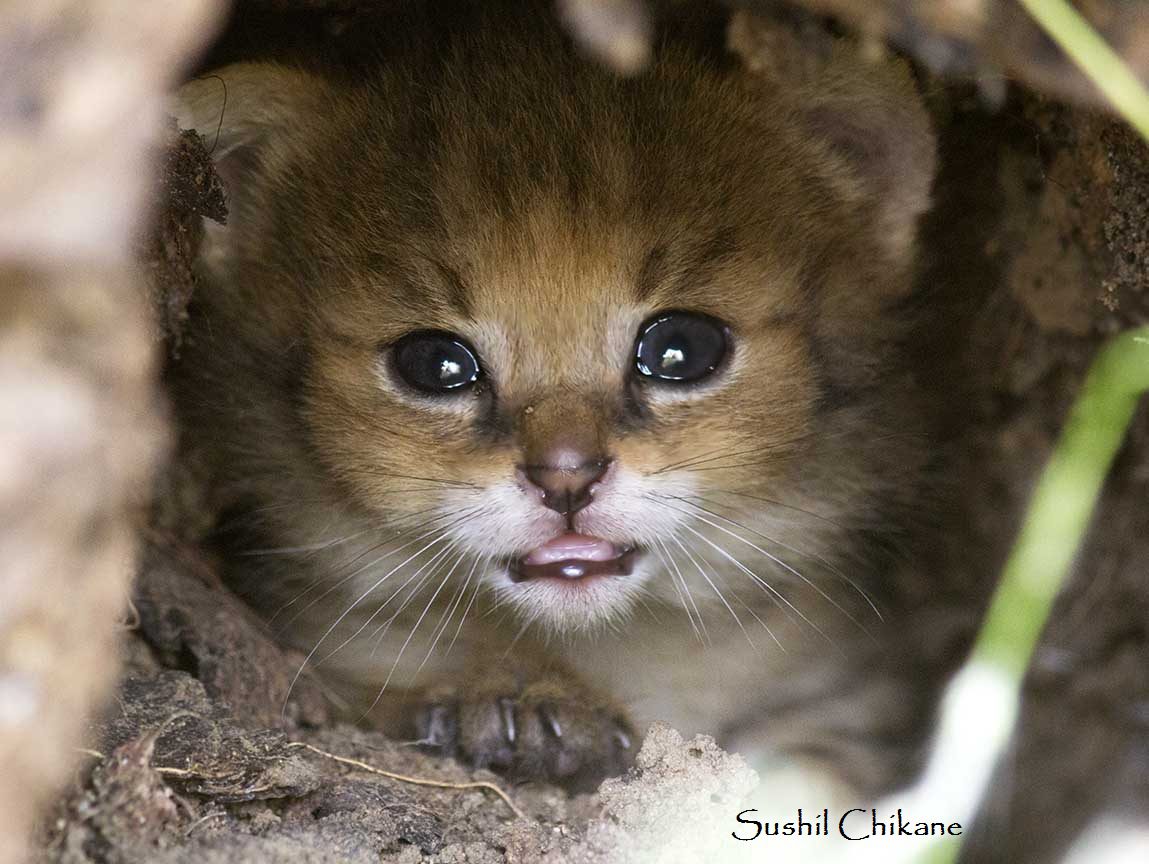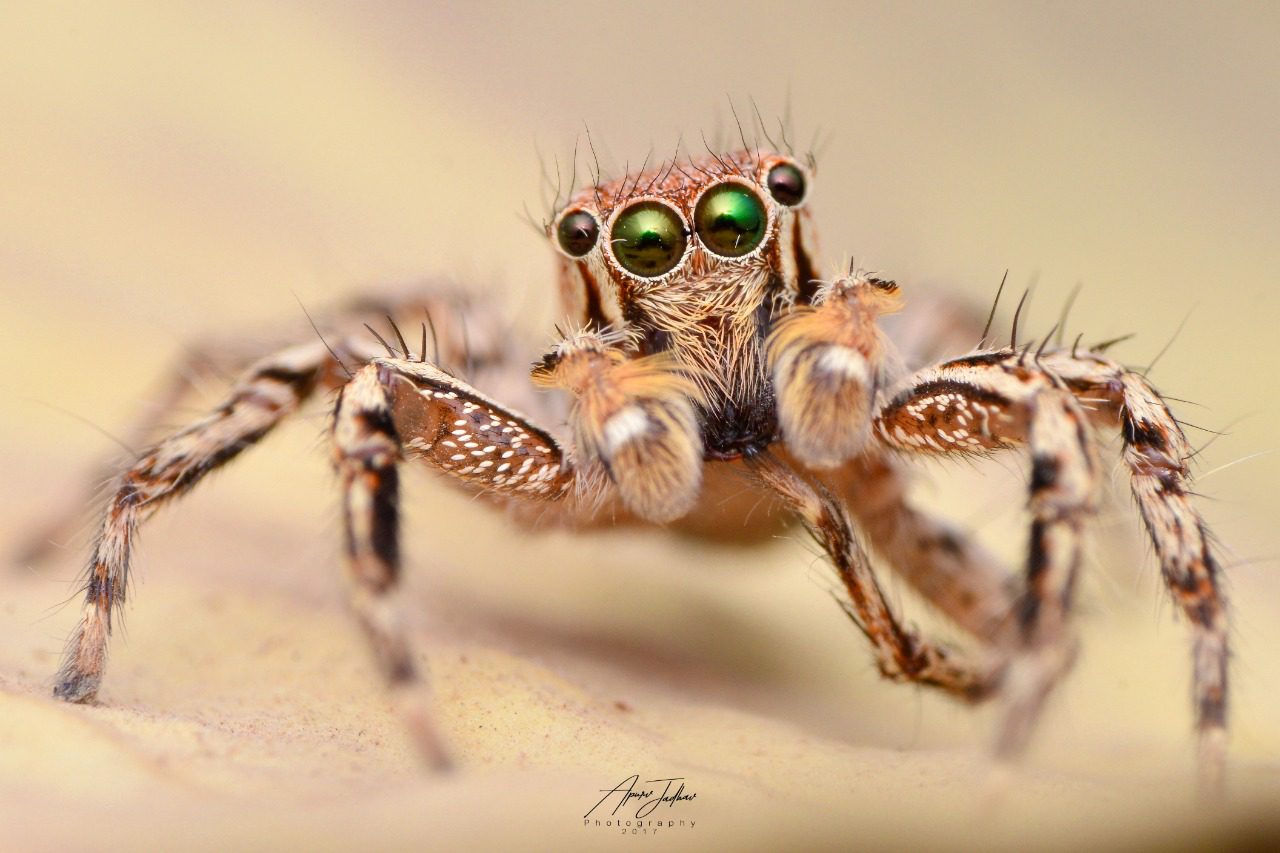Article by: Sushil Chikane

“This might not be a very good idea!!!”- I said to myself with a camera in one hand, tripod in the other and binoculars around my neck. There were at least 50 people around me as I stood in a Kharif field outside a burrow along the periphery of Bandhavgarh Tiger Reserve. It all started with an unplanned birding plan after our morning drive in the park.

Let’s go birding!
Back from the morning park safari, two of my friends and I were glued to our camera monitors, going through the photos we had just clicked on the drive. We hadn’t seen a tiger, but a safari with loads of birding was good enough to keep us happy! Just as we were finishing up with breakfast, we were conflicted between a shower and nap or taking that extra effort to scan the fields around our hotel for some birdlife. The tourist in each of us gave in to our inner wildlifer and we decided to head out for a trail. Geared up with binoculars, bird books and camera, we walked through the rice plantations. Our only agenda was to photograph Munias, Bee-eaters, Warblers and some other small avifauna. We were soon at a broken cement bride that went over a tiny stream. This stream was bordered by tall grass and hedges on each side with farms beyond them. Sitting on the bridge we were lucky enough to have sighted quite a number of species of birds. My friends with their massive tele-lenses were glued to the bird activity site while I decided to explore the fields for some macro fauna later.

What’s in the grass?
It was the harvest season. Standing on a mud bund, I took a look around. The was the stream on one side with fields around it for as far as I could see. While I stood in chest high grass, I heard some rustling in the undergrowth close to me. I froze and waved to my friends to come inspect the place with me. Instead farmers from all around gathered with laathis and sickles. Chaos at this optimum scale. This either meant a snake or some small animal which inhabits the field. Most cultivations act as a perfect hideouts for small wildlife since they provide decent refuge until harvest season. Harvest time is when the man and animal are confrontation with each other. Animals are either left to move to a different site or end up in a directly confronted with humans, the outcome of which usually isn’t usually in the favour of the animal.
While farmers continued to accumulate, contemplating the identity of the animal, my guess was it being a snake. Snakes are known to hide in burrows around the mud boundaries of fields. As the crop grows, they attract a large number of rodents, soon follow by snakes. This makes snake encounters common during harvest season. People had gathered by now, without a clue of how to react in the situation. One of them yelled, “Saab!!! Kuch janvar ghus gaya hai ghaas me”. Most of the people there acted like experts, but no one actually came up with a solution. It took some convincing before they allowed me to inspect the area.
The big question then was, “What do I do?”. I used my tripod to move the grass and saw two burrows there. And there I saw something move into the burrow! So fast was the movement, that all I could see was some brownish grey thing dive into darkness. I for one didn’t want to shove my head into the burrow. The last thing I wanted to happen was a snake biting me or an angry fox rushing out of it and nipping my nose. There I stood in a dilemma. I didn’t want to shove my face in a burrow with an angry animal, especially when I had no clue what that animal was, nor could I leave the site as the farmers would have burnt the grass or hurt the animal.
I finally decided to do something I wouldn’t recommend anyone- take a look into the burrow that had an animal in it. Then the most unexpected thing happened! In the burrow was a fur-ball staring at me. Scared but brave, it’s voice was mute and yet it purred, guarding it’s burrow. At the first glance, I had no clue what it was. Well informed otherwise, these are the times when your mind blanks out. My mind started guessing- kitten of Jungle Cat/ domestic cat or for all I knew a rusty spotted cat. I quickly clicked photograph of the cat and let it be. We studied the image and it definitely wasn’t a domestic cat kitten, with the prominent black bands on its forehead and legs. My friends rushed over and helped me convince the farmers to not disturb the kitten. The farmers were not happy since they could not harvest the crop in that patch. In all this chaos, walked in our gypsy driver, “Dada, safari ka time ho gaya hai”. We had been there for so long without realizing lunch time had long passed and it was time for the afternoon safari! Then started the heart vs. mind game- whether to stay back and look after the kitten or to go for a safari. My friend, hotel owner, actually had to force us to go for the drive and assured us he would handle the situation. He made sure one of the hotel staff, belonging to the adjoining village would be deployed at the site to ensure the safety of the kitten while we were gone.

The Climax!
Throughout the safari we sat, not discussing what sightings could happen, but instead scanning the cat’s images and field guides trying to identify it. Suddenly I yelled, “Milgaya”. Our gypsy came to a halt in a cloud of dust. Our driver screamed, “Kaha hai Tiger?” and I said, “Tiger nahi Jungle Cat ka buccha mil gaya!”
Concerned about the kitten we were uneasy during the safari and finally decided to head back to the hotel. We bolted towards the field where the kitten was spotted. Gasping for breath we halted at the burrow only to see our hotel guy standing smiling at us saying, “Saab uski Maa usko legayi!!!” Our joy knew no boundaries. What better ending could we expect? The farmers didn’t kill the cat, the kitten wasn’t abandoned and the cat family was reunited.

Jungle Cat Notes:
Once thought to be closely related to the lynxes (having common characters like tufted ears, long limbs and a short tail), the Jungle Cat is actually a close relative of the domestic cat. Jungle cats have a wide but patchy distribution. The species is widespread in India. Areas with extensive deciduous dipterocarp forest, open grasslands and scattered surface water are the species predominant known habitat in Indian subcontinent. These cats over a period of time have adapted well to cultivated areas and often have been observed in many different types of agricultural and forest plantations. Living in such close proximity to humans often causes a conflict between both. This causes unselective trapping, snaring and poisoning around agricultural and settled areas leading to population decline in many areas throughout its range. India formerly also exported large numbers of jungle cat skins before the species came under legal protection (over 300,000 were declared as being held by traders there when export was banned in 1979), and some illegal trade continues today. The jungle cat is listed on CITES Appendix II. It now is now protected from hunting in India, illegal killing of these cats continue.




